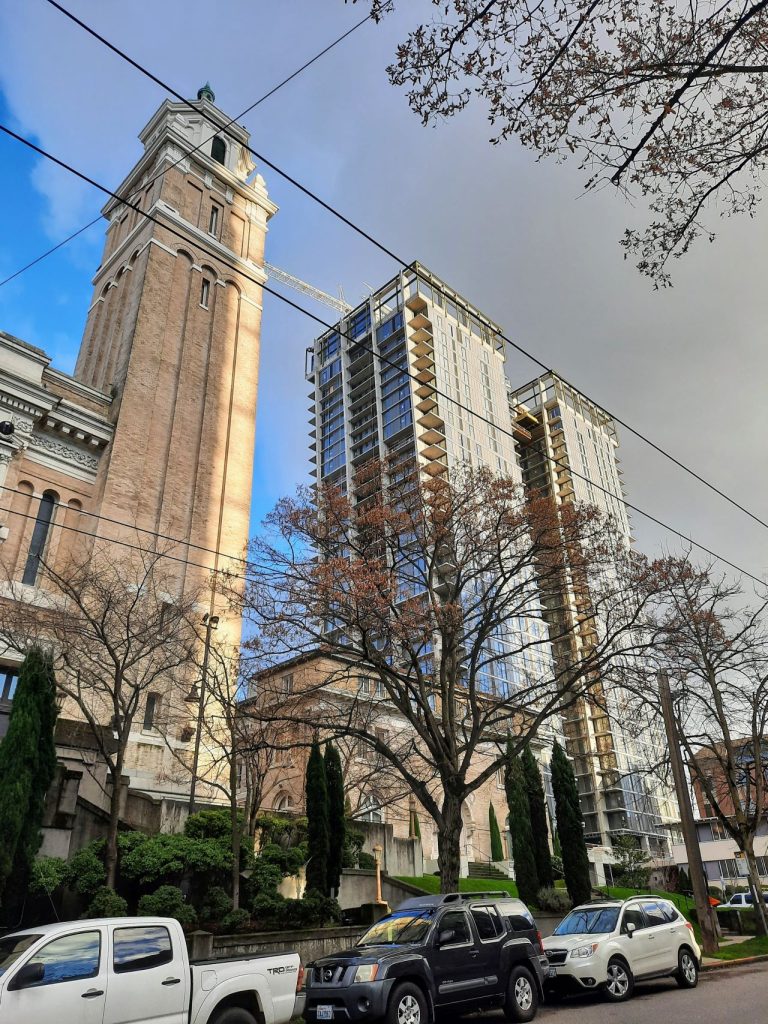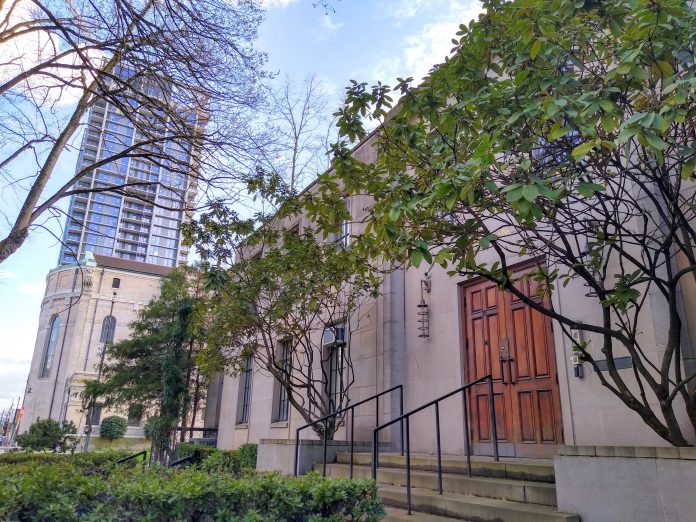
The Catholic Archdiocese of Seattle has announced the impending sale and redevelopment of four properties on First Hill in Seattle to Westbank, a developer based out of Vancouver, British Columbia internationally recognized for its work in the sustainable building sector. Plans aim to create a carbon-neutral community of more than 1,300 homes. The Catholic Church has maintained a strong presence on First Hill since St. James Cathedral was erected and dedicated in 1907. By selling the properties, the Church hopes to enhance a neighborhood in which it has deep roots while contributing to its mission of environmental stewardship.
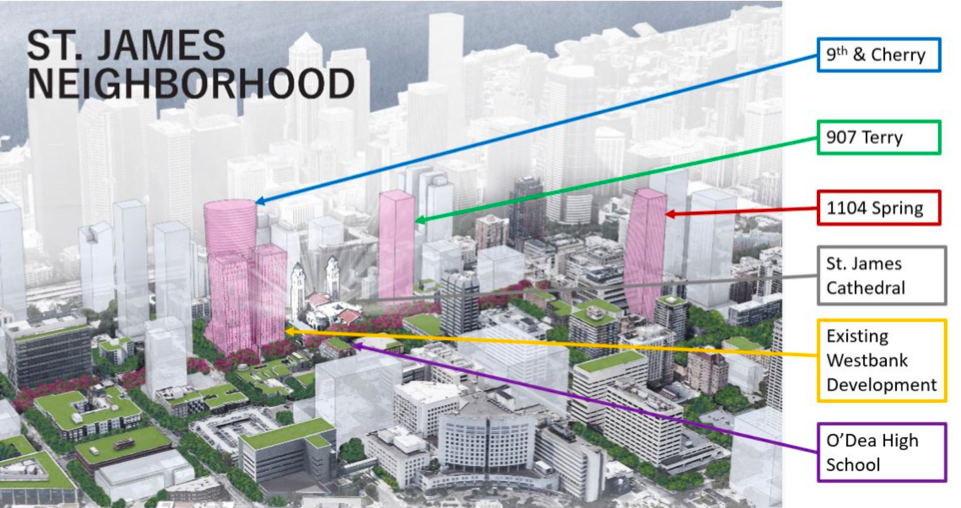
The plans align with the Archdiocese’s Catholic Real Estate Initiative, announced in November of 2021, which focuses on redeveloping underused church buildings and land.
“Creatively thinking about how we can better use our properties to achieve the mission of the Church is exactly what we need to do as good stewards of God’s gifts,” Archbishop Paul D. Étienne said in a press release. “Redeveloping our real estate in a very efficient and sustainable way not only reflects our Catholic value of caring for our common home, but also provides us with resources to carry out our greater mission of bringing Christ to others. This significant project is an investment in the First Hill community and in our future, ensuring we can continue the good work of the Catholic Church.”
The Archbishop has an eager partner in Westbank, which is already developing and nearing completion on twin towers just east of St. James Parish in First Hill. That project was adjacent to and in partnership with another First Hill institution: the Frye Art Museum.
“It’s a pleasure to be working with our partners at the Archdiocese of Seattle, to realize our shared vision for First Hill,” said Westbank founder Ian Gillespie. “Our initiative will create low-carbon housing, infrastructure and amenities that will serve Seattle for generations to come.”
Details on the how much transaction cost has not been made public, but given the size and location of the properties involved, the price tag was certainly substantial. Additionally, the Archdiocese has shared that funds from the sale will be used to acquire new office space for its 125 employees currently working in four buildings, uniting them under one roof. Under current plans, decision on where that office space will be located will not be made until 2023 and employees will not be moved until 2025.
Some $25 million could be generated through Seattle’s Mandatory Housing Affordability program for affordable housing creation through organizations like Catholic Housing Services, the Archdiocese declared in a letter to parishioners. Larry Brouse, pastoral assistant and de facto chief operating officer at St. James, sees the affordable housing will be an important asset.
“What everyone wants to see is workforce housing,” Brouse told Post Alley‘s Joel Connelly. “We want to see housing for those who work at Swedish or teach at O’Dea — they ought to be able to live here.”
The sale of the properties will also help the Church to secure a “much needed nest egg” for the preservation of historic buildings like St. James Cathedral, the rectory, and Cathedral Place, including needed plumbing work and seismic retrofits that will be quite costly. As part of the agreement with Westbank, the historic Connelly House, one of the four properties included in the sale, will be preserved.
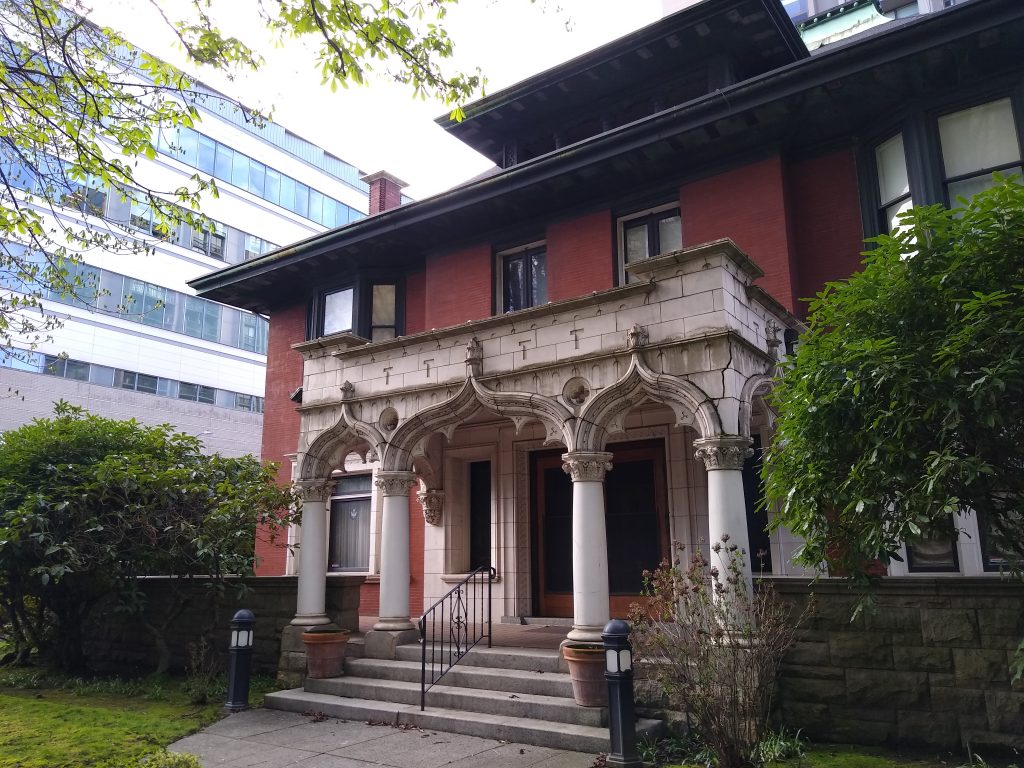
The real estate deal follows the Archdiocese’s decision in October to close two Catholic churches in Seattle: St. Patrick’s in North Capitol Hill and St. Mary’s in the Central District. Both neighborhoods are home to a higher density of Catholic churches than other areas of the city, including towering the Immaculate Conception parish church in the Central District, and declining church attendance numbers influenced the decision to sell. A strategic plan by the Archdiocese found that attendance of mass throughout the Pacific Northwest region had declined by 15.5% between 1999 and 2018 even as regional population growth soared. First Hill has been a major part of that growth, with 2,258 new homes added in the last six years, according to the Seattle Office of Planning and Community Development.
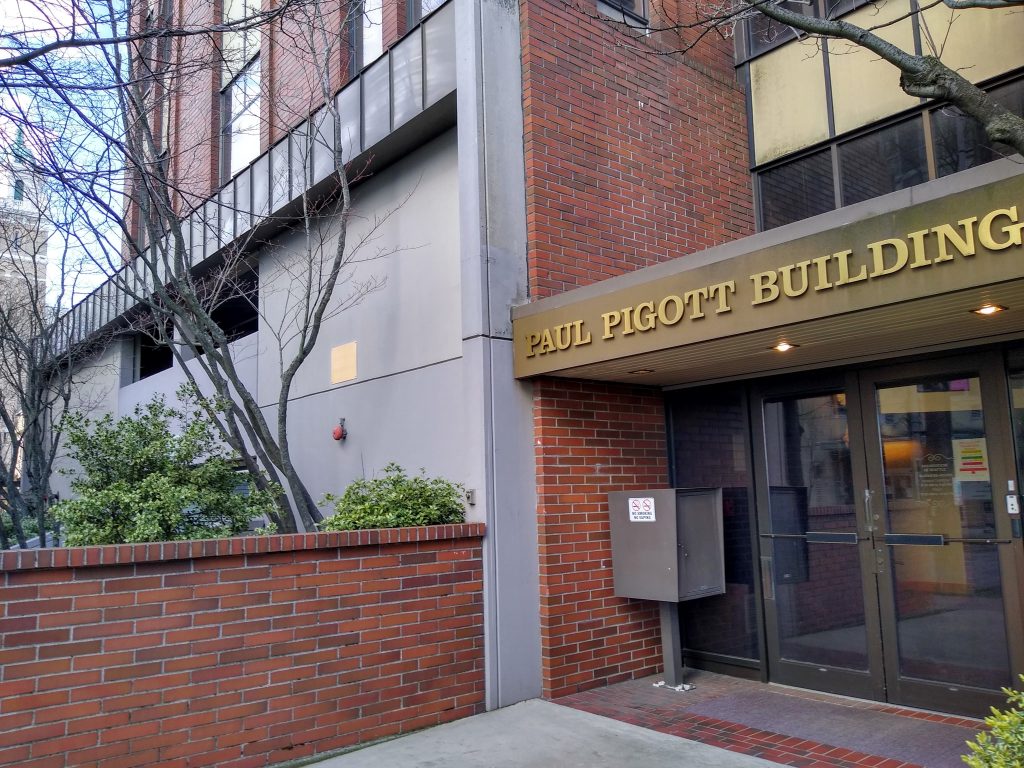
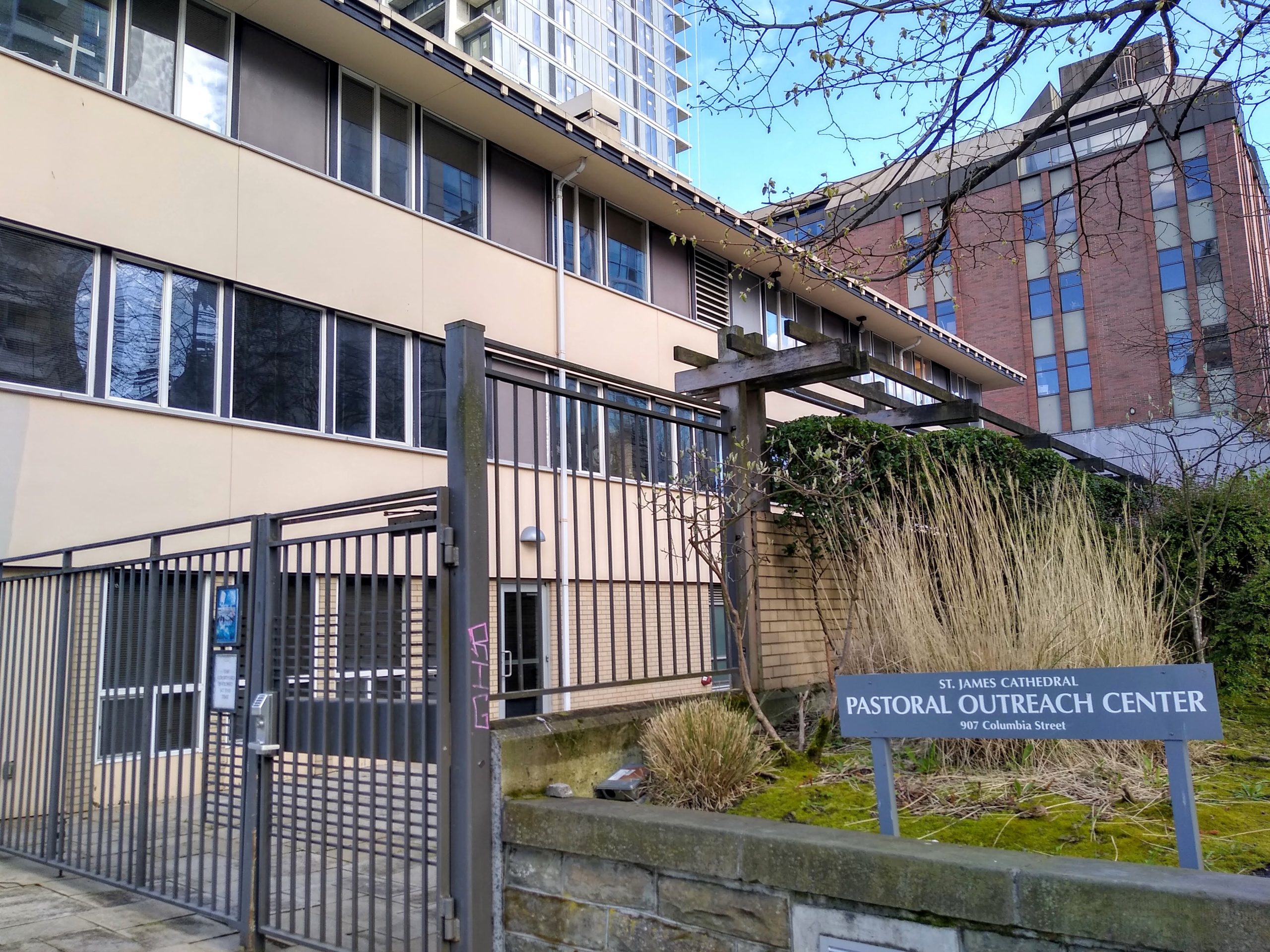
To create a carbon-neutral community, developer Westbank will be partnering with Creative Energy, also based out of Vancouver. Creative Energy is the operator of one of the largest district energy systems on the continent. Since 2014, Creative Energy has sought to reduce its greenhouse gas emissions, and in First Hill the company has already partnered with Swedish-Providence Health Services to modernize its campus infrastructure. Plans are for the medical campus to divert its excess heat to nearby highrise residential buildings connected to its platform, thus reducing the overall carbon footprint of the neighborhood. This infrastructure investment, dubbed the The First Hill District Energy System, is part of the commitment Swedish and Providence have made to become carbon negative by 2030.
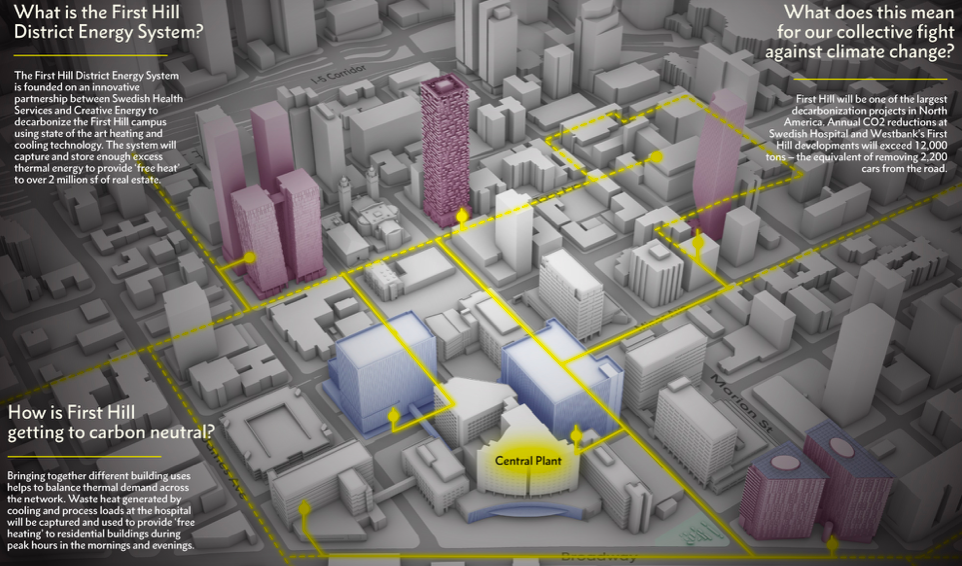
Project partners estimate that this effort will be “one of the largest decarbonization projects in North America, achieving CO2 reductions in excess of 12,000 tons year — equivalent to removing 2,200 cars from the road.”
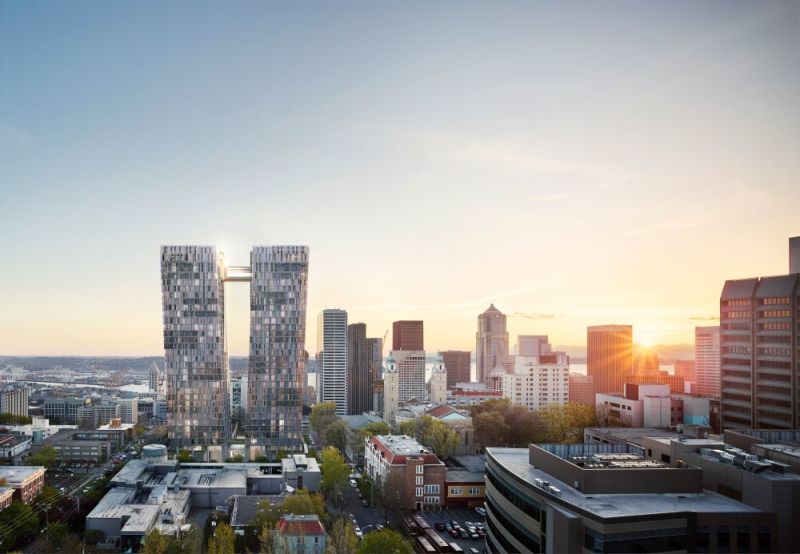
In addition to the highrise buildings created by the sale of the four Catholic Church properties, Museum House (the twin towers designed by Perkins + Will architects and developed by Westbank) will also be connected to the district energy system. That project is expected to be completed sometime later this year.
Natalie Bicknell Argerious (she/her) is a reporter and podcast host at The Urbanist. She previously served as managing editor. A passionate urban explorer since childhood, she loves learning how to make cities more inclusive, vibrant, and environmentally resilient. You can often find her wandering around Seattle's Central District and Capitol Hill with her dogs and cat. Email her at natalie [at] theurbanist [dot] org.


